Magnolia is one of the most beautiful blooming trees that will decorate your garden, filling it with a pleasant vanilla-lemon flavor. Magnolia originally from China, where it is considered a symbol of purity, virginity. Her luxurious flowers personify the spring and female charm. In the natural nature, Magnolia is found in forest regions, on the shores of the rivers of East Asian countries, on the Japanese Islands, in South China, as well as in Central and North America. For the first time, Magnolia fell into Europe from America at the beginning of the 18th century, where she conquered the hearts with its incredible beauty and exquisite blossom.
Magnolia refers to the Magnolia family, there are more than 70 of its species in the world. Luxurious magnolia trees can reach from 5 to 20 meters in height and blossom white, gentle pink, purple or red flowers. Although Magnolia is considered a capricious plant, some of its varieties get along well in our climate. For example, Magnolia Starlae (Magnolia Stellata), the intricacies of cultivation and the care of which will be discussed in this article.
Star Magnolia - Description
The magnolia is a star from the Japanese island Honshu, differs from other types of lush flowering of large snow-white flowers in the shape of a star. In addition, the tree has the original form of the crown and leaves, which gives it the right to be considered one of the most exquisite types of magnolia. In the wild, the magnolia star is a low shrub of up to 3 meters in height with an empty crown. Growing in wet mountain forests. Small sizes of shrubs, its compact crown and early flowering, compared with other types of magnolia, made magnolia star very popular in Europe and abroad. Beautiful shrubs with spectacular large fragrant flowers will decorate even the smallest garden, as the magnolia is star is the most miniature view of the genus magnolia.
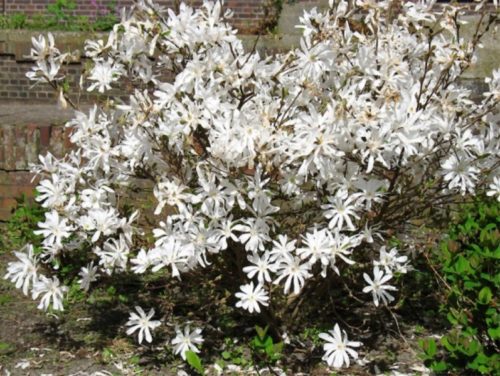
Magnolia does not endure strong frosts, but grows perfectly in a moderate climate, it needs landing in the garden protected from wind and drafts.
The growth of the shrub occurs not so quickly - for the year, magnolia shoots only 15 cm, young shoots and kidneys are strongly pubescent. The leaf leaves are quite large and fleshy, possess the elongated-oval form, have shine.
Magnolia flowering time - April, when flowers appear that have a star shape. Flowers are large, their diameter is up to 12 cm, consist of 15-40 large petals. The blossom of magnolia star is short-lived - about 3 weeks, then dark green leaves appear on the shrub.
The fruit of the magnolia of this species in its own appearance resembles cucumber, has a reddish tint.
Magnolia Star: Popular varieties
- Royal Star. It is the most popular and frost-resistant variety of magnolia by star, the bush grows up to 3 meters, withstands 30 degree frosts. Flowers with snow-white flowers, the petals of which are located in two rows.
- Rose. A shrub up to 2 meters of height is distinguished by a spherical crown, large flowers, consist of 10-20 petals painted in gentle pink color, have a tender aroma. Winter hardy and decorative variety.
- Dr. Massa. Shrub crown height reaches 2, 5 meters. A distinctive feature of the variety is long and lush flowering. Buds to breakdown have a pink shade, then the petals acquire a snow-white shade. Polish flowers, have a gentle aroma. Grade perfectly tolerates the winter of temperate climate.
- Jane Platt. One of the most charming varieties of star magnolia. Flowers with fragrant pink flowers in diameter up to 20 cm, with a huge number of petals, which are built in 3-4 rows. The variety is characterized by a good winter hardiness.
Landing magnolia star
Successful cultivation of magnolia in your garden depends on the correct selected place for planting a seedling. An ideal place for landing a group of trees or a single shrub is the southern or south-eastern part of the garden, with good lighting during the day. However, it is worth considering that because of the abundance of sunshine, Magnolia can break the leaves too early. Therefore, the best place for magnolia will be a plot with already growing high trees. Crawn of a high tree crown will give a light shading to young magnolia seedlings on a hot midday clock. In the first years of life, magnolia seedlings need a secluded garden corner, which is protected from bright sun and drafts. In a more mature age, a gentle tree is already able to withstand hot days. Choosing a suitable place, it is also worth considering that the magnolia bush grow well with age.
If you live in the region with a harsh climate, to plant magnolia is recommended on a closed area, for example, in front of the southern wall of the building, so colors will be securely protected from a draft and cold wind. Late spring frosts of the northern regions are detaching for the magnolia flowers, but not for trees.
The soil for magnolia star
The magnolia is star - a capricious plant, but only in the first years of life. The seedlove was capable only in the soil with certain characteristics. Prefers a fertile, loose, well-permeable soil with a neutral or weakly acidic reaction.
When landing, the magnolia seedlings should be considered the features of its growth:
- The young tree is badly caring on a plot with a lime soil, where its roots are practically not developing and the plant can perish. Putting into the soil of sour peat can correct the situation and lower the pH of the soil.
- Magnolia slows down its height in heavy and overwhelmed soil, especially in places with stool groundwater.
- For the cultivation of magnolia are not suitable for poor sandy soils.
Landing time and seedlings of magnolia seedlings
Buying magnolia seedlings for landing is carried out in early spring or autumn. As a rule, seedlings are sold landed into containers, without leaves, you can also find seedlings with an earthen room on the roots. Buy seedlings with leaves does not make sense, as such young trees do not take root after the transplant. On the timing of the landing of Magnolia to a permanent place at the gardeners, the opinions are diverged.
Experienced gardeners are recommended to acquire seedlings in containers and plant them in the garden, at a permanent place, late autumn, guided by two reasons:
- The plant grown in the container when landing in the soil in the spring gives a quick and active growth, as a result of which the bush forms a large number of shoots that will not have time to wait for the winter. The rapid shoots can freeze into severe frosts and weaken the bush. When planting a seedling in late autumn, you acquire Magnolia seedlings, already prepared for the winter, which stopped in growth and move well frost.
- Another reason for buying a sapling in the fall is discounts when buying, as the spring seedlings are quite expensive.
Marnolia Star - landing in the ground
- Preparing the landing point to plant a seedling of magnolia, it should be borne in mind that its size should be 2-3 times the volume of the root system of the bush. Too little pit is able to spoil the root system.
- The soil extracted from the pit needs to be mixed with a recoverable compost and peat, observing the 2: 1: 1 proportion. With too tight soil, you can add some sand.
- At the bottom of the pits should be laid with a drainage layer of 20 cm from rubble, ceramisite, broken bricks to provide a good water permeability plant. The following layer in the pit is placed sand (15 cm), and then the prepared earthly fertile mixture into which the seedlove will be placed.
The seedling is installed in the center of the landing pit, carefully, so as not to damage the horse system. - The transplant is carried out directly from the container by transshipment by an earthen room. Saplings whose roots dried before boarding, most likely not come true. The root cervix should be higher than the surface of the earth for 3-5 cm.
- By filling out the remaining part of the soil landing, it is necessary only to run the ground to the ground so as not to harm the roots of magnolia, and then ridiculously pour a young plant. After the soil does absorb all moisture, the rolling circle of a seedling must be meditated to peat, and to cover the coniferous bark on top to prevent rapid evaporation and save moisture in the soil longer.
Star Magnolia: Care
For abundant and lush flowering of magnolia, the star must comply with certain rules of watering, the fertilizer of the soil and the shelter of young shrubs for the winter.
Watering magnolia star
Magnolia star needs regular abundant irrigation, especially at a young age. It is impossible to dry out the soil into the arid summer. Save the water balance in the soil helps the mulching of the priority circle with dry grass or sawdust. In addition to saving moisture and grinding, mulching is a power source for the root system and improving the soil structure.
Winter shelter magnolia star
Despite the fact that the magnolia star is a winter-hardy view and grows in a temperate climate, it needs to create a winter shelter in the first years of life. The shelter helps to preserve young shoots and flower kidneys from freezing in the period of winter thaws when the kidneys can begin to bloom. To protect the tree, it is enough to clean with a burlap or a dense cloth in 2 layers, trying not to hurt fragile branches. Adult trees do not need shelter, fairly late in the fall, the roasting zone is covered with a thick layer of mulch up to 30 cm.
Pruning magnolia star
The magnolia star does not need forming trimming. It is enough just to regularly remove dried and extinct branches for the winter. Sections of cuts must be treated with garden borants.
Upborn magnolia star
Magnolia responds well to feeding fertilizers, but only when the seedlings reach a three-year-old age. Previously fertilize the plant is not recommended. The feeding is made from the beginning of the spring until August, it is used to prepare for 10 liters of water:
- 20 cm ammonium nitrate;
- 15 gr urea;
- 1 kg cowboat.
Up to 40 liters of fertilizer are needed to fertilize the bush. You can also purchase ready-made mineral fertilizers for feeding magnolia. Applying fertilizers, it is necessary to observe the measure, since the overdose of fertilizers may damage the horse system and drying the leaves. Especially dangerous for the exquisite shrub, the oversupply of nitrogen fertilizers, which leads to the freezing of magnolia roots in the winter period. It is not recommended to make feeding with nitrogen late in mid-July.
Magnolia reproduction star
The reproduction of magnolia by star seeds or cuttings is possible, but this process is too complicated and time-consuming, for only professionals. For amateur gardeners, the most appropriate method of reproduction of the plant - gods. Cooking in the spring, choosing flexible shoots for more than 3 years, which are closer to the ground. The shoots are fixed with garden brackets and sprinkled soil. In the place of touching the bark of the branch of the earth make a small incision. After a year, the gangs are rooted and it can be separated for landing for a permanent place in the garden. For better rooting of the grooves, the place of the outbreak should be treated with a growth stimulator using a rathman moistened in solution.
Pest Magnolia Star
Among the main enemies of magnolias are distinguished by rodents that damage the root neck of the plant under the ground or its root system. Also irreparable harm to the trees deliver moles that undermine their roots. In case of detection of damage to the stem or the roasting neck, these places are required by 1% solution of Fundazola.
Another danger that can climb magnolia is a web tick that appears during drought. This pest is powered by the juice of the lower leaves of the plant, which leads to their early fallout in July or August. To combat a spider ticks, phytodeterm, accomplishing, agventine
Star Magnolia - Queen of the Spring Garden
The magnificent and fragrant blossom of the magnolia of the star early spring creates a unique atmosphere in the garden. Separately growing trees in front of a house or a gazebo, where you can admire it with charming flowers, look beautiful and effectively. No less beautifully look to the landing of magnolia in a group with other shrubs, especially expressively looks on the background of evergreen trees: juniper, tees of berry.
Around the tree you can land the spring of soil colors, daffodils, crocuses, which in composition with blooming magnolia will create a spring mood and fill the garden with a unique gentle aroma.

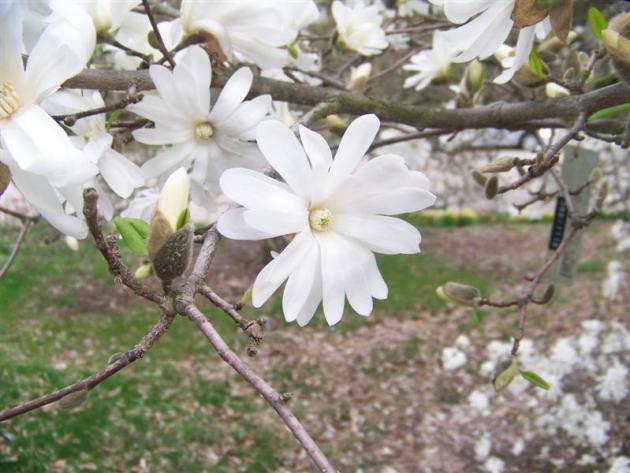
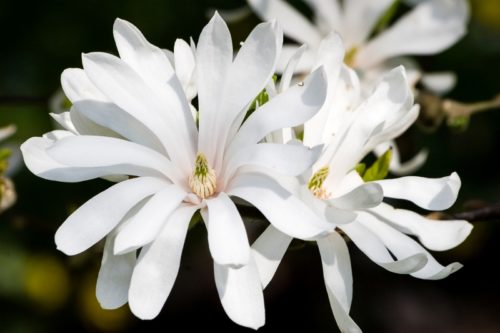
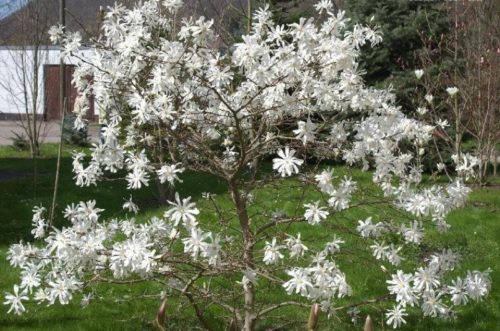
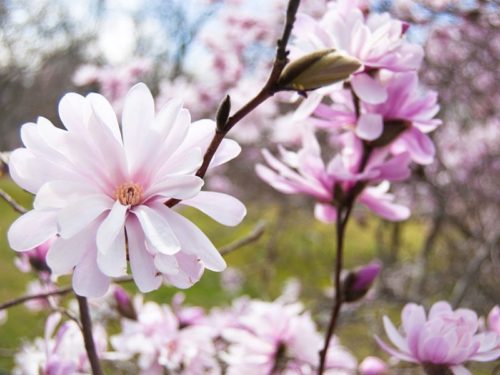
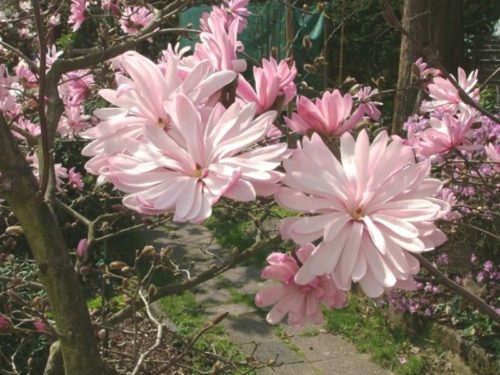
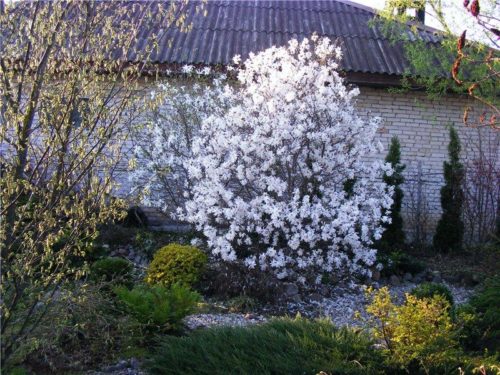
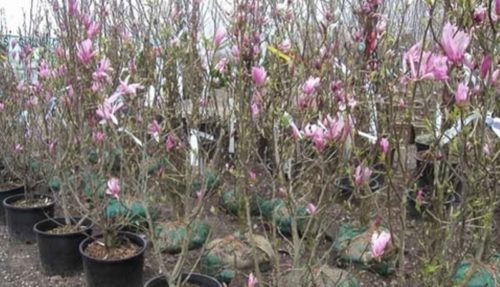
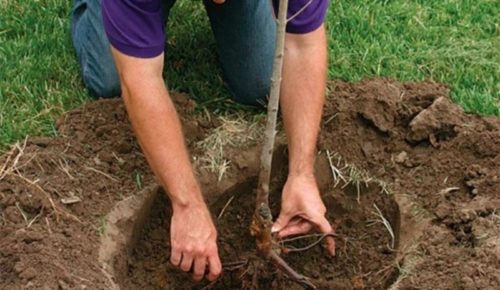
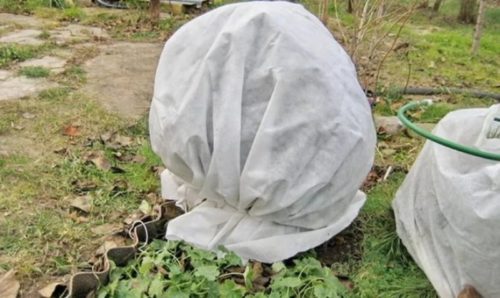
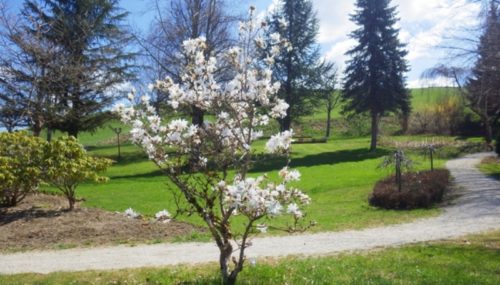
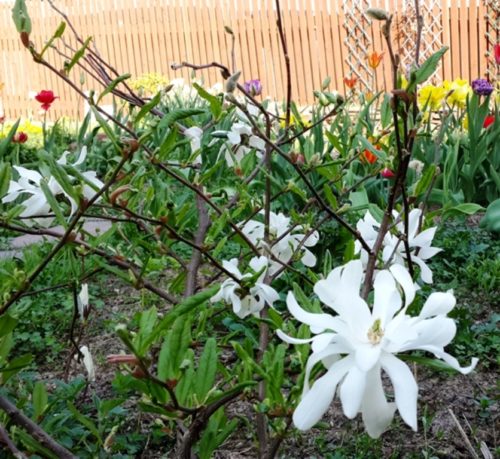

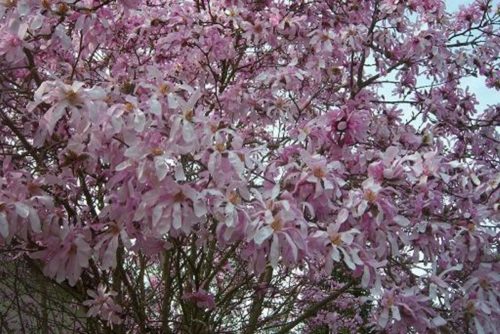
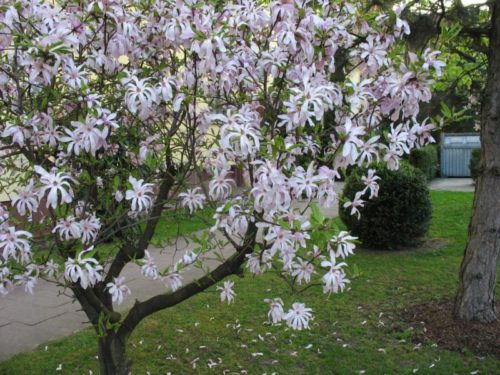
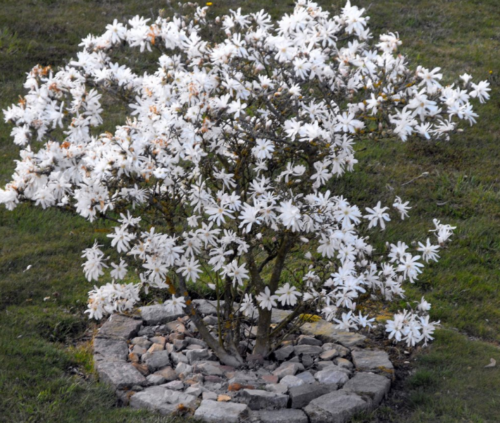












 Start a discussion ...
Start a discussion ...